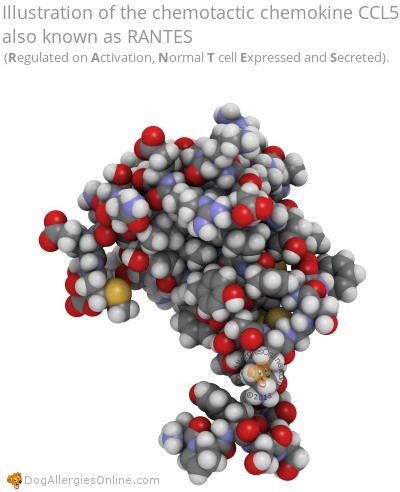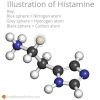What are Cytokines?
Cytokines represent a diverse collection of chemical mediators that function as cellular molecular messengers. They are proteins produced by immune cells (not stored but secreted rapidly and briefly) that, when released either into the blood stream or localized tissue, activate or trigger a response in a target immune cell by binding to receptors on it.
Providing a definitive classification of cytokines is highly problematic given their diverse and anomalous nature. This means they can be classified in various ways based on variables such as their size, 3-D structure, function, cell they were produced in or cell they target etc. This can be very confusing for the uninitiated as different sources will often list or classify them in different ways.
In addition, although considered to be immunomodulatory agents that can stimulate or suppress various aspects of the immune system, cytokines include cellular molecules that have systemic and/or localized effects, as well as others that are associated with growth and development. Such varied characteristics make the distinction between what constitutes a cytokine and a hormone problematic, which results in much disagreement amongst scientists.
Furthermore, as scientific knowledge in this field grows and evolves, things that were once considered fact have since been shown to be incorrect or just part of a bigger picture e.g. the name ‘interleukin’ is now considered a misnomer because this group of cytokines are produced by a variety of cells and not just leukocytes. This situation has led to various cytokines being renamed e.g. T cell growth factor (TCGF) is now termed interleukin 2 (IL-2).
The effects produced by cytokines depend on many variables such as the specific type of cytokine or receptor it binds to, the concentrations of both cytokine and receptor, as well as the signal (‘downstream signaling’) they produce. However, as a collective, cytokines elicit a range of responses, including:
- Immunoregulatory (regulate the immune system) e.g. immune cell ‘on-off switches’ such as interleukin 2 (IL-2) triggering T cell production.
- Proinflammatory (promotes inflammation) e.g. chemokines and secretion of various effector molecules including IgE or histamine release. An extreme example of the impact cytokines can have is a condition known as a ‘cytokine storm’. This occurs due to failure of the feedback mechanism that controls their production, resulting in elevated or uncontrolled levels of cytokines. This overreaction of the immune system results in an inflammatory cascade, swelling, redness, high fever and possible death e.g. as associated with the 1918 influenza pandemic.
- Chemotaxis (involving the use of chemical gradients to guide various cells such as monocytes/macrophages, neutrophils and T-cells)
- Colony-stimulating factors or CSFs (cause cellular proliferation and differentiation into specific blood cells)
- Growth factors (associated with growth and development)
- Phagocytosis and elimination of pathogens and tumor cell death.
A key point to remember is that although a specific cytokine may have more than one function, more than one cytokine can produce the same effect!
Cytokines Associated With Inflammation:
What are Chemokines?
Chemokines are chemotactic cytokines that are released from a wide variety of cells. They chemically attract (chemoattractants) and guide immune system cells by exerting their effect on chemokine receptors found on their target cells.
There are four groups of chemokines based on their structure and these currently include:
- CC or β-chemokines : CCL1 through to CCL28 bind to various CCR receptors
- CXC or α-chemokines: CXCL1 through to CXCL17 bind to various CXCR receptors
- C or γ-chemokines: XCL1 and XCL2 bind to receptor XCR1
- CX3C or d-chemokines: CX3CL1 binds to receptor CX3CR1
Chemokines can be classified into two groups based on their functionality:
- Homeostatic: Normal tissue maintenance or development processes e.g. CCL10, CCL19
- Inflammatory: Recruit immune cells to an area of injury, infection or inflammation and initiate an immune response or help the healing process. Their release may be stimulated by other pro-inflammatory cytokines such as interleukins. The types of cell attracted include various white blood cells (eosinophils e.g. CCL11, monocytes/macrophages e.g. CCL7, neutrophils e.g. CXCL8, T-lymphocytes e.g. CCL17) and mast cells e.g. CCL5

What are Lymphokines?
Lymphokine is a general term for a subset of cytokines that include various chemical mediators such as certain interleukins, colony-stimulating factors (CSFs), interferon as well as tumor necrosis factor-alpha and beta and transforming growth factor, to name but a few.
Lymphokine refers to those cytokines produced by immune cells called lymphocytes (B and/or T-cells), whilst their relatives, monokines, are produced by monocytes (and macrophages).
However, it should be remembered that although a cytokine may be termed a lymphokine because it is produced by lymphocytes, it may also be classified in other ways based on other properties e.g. interleukin 12 (IL-12) is considered a lymphokine because it is produced by both B and T-cells (lymphocytes) but it is not exclusively produced by them; IL-12 is also secreted by dendritic cells and macrophages.
Lymphokines have many functions related to influencing and regulating a variety of white blood cells and other cells, be it autocrine (those that produced them), paracrine (in vicinity) or endocrine (at a distance). It includes attraction of immune cells and their activation, amplification, cytotoxicity, differentiation, inhibition, transformation as well as cell-mediated immunity (does not involve antibodies).
The following section about interleukins, the largest group of cytokines, will help highlight the varied functions of lymphokines.
What are Interleukins?
Interleukins are a group of cytokines that play an important role regarding the immune system and regulating cellular differentiation and proliferation. Aside from activating specific white blood cell ‘killer’ activities, interleukins stimulate immune responses that include inflammation.
The interleukin families are given the symbol IL and at present are numbered 1 to 36, with each family sometimes containing more than one type of cytokine e.g. interleukin 1 family (IL-1) contains 11 cytokines.
Interleukins are produced in a variety of white blood cells e.g. eosinophils, monocytes/macrophages, lymphocytes (including B cells, NK and T cells) and other cells such as astrocytes, dendritic, endothelium and mast cells. The numerous receptors they target can be found on a range of target cells that also include various white blood cells and other cells such as dendritic, endothelium, hematopoietic stem and mast cells.
The action of a particular interleukin depends upon both the target receptor it binds to and the specific target cell. If we take IL-1 as an example, it is produced by monocytes/macrophages, B cells and dendritic cells and its target receptors (termed CD121a/IL1R1 and CD121b/IL1R2) can be found on endothelium cells, lymphocytes (B cells, NK cells, T helper cells) and macrophages. Whilst functions related to activation, maturation, proliferation and stimulation occur with lymphocytes, in the case of endothelium cells or macrophages, inflammation and fever are possible outcomes.
Other examples of interleukin families include:
- IL-2 has been used as an immune system activator cancer therapy e.g. melanoma (Smith et al 2008). It has also been used for HIV and transplant patients.
- IL-4 plays an important role in the acute response i.e. early phase (production of sensitized cells) of an allergic reaction.
- IL-6, IL-7, IG-13, IG-17 are all associated with inflammation and IL-31 may be involved in skin inflammation.













